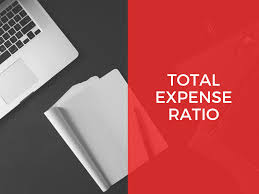Securities and Exchange Board of India (SEBI), the regulator of mutual funds in India vide its circular SEBI/HO/IMD/DF3/CIR/P/2017/114 dated October 6, 2017, redefined the characteristics and norms of all mutual fund schemes to ensure uniformity in the features of similar schemes launched by different mutual fund houses. The revised norms are announced to ensure convenience to the investor to evaluate features and returns of different schemes to take informed investment decision.
As per the revised norms, mutual fund schemes are categorized under five broad categories as mentioned below:
• Equity schemes
• Debt schemes
• Hybrid schemes ( a mix of equity and debt),
• Solution-oriented schemes ( For special purposes like education, retirement etc) and
• Other schemes
SEBI also has defined Large Cap, Mid Cap and Small Cap to avoid ambiguity under categorization of stocks.
Why new definition for Large Cap, Mid Cap and Small Cap?
An Equity Fund Scheme is a mutual fund scheme that invests mostly in shares/stocks of companies. To ensure uniformity and clarity in investment, SEBI has defined Large Cap, Mid Cap and Small Cap. There have been many schemes that focused on large cap, mid cap and small cap stocks. However, there was no clear demarcation as to the criteria followed for categorization of stocks into these three categories. As a result, a stock that was considered as Mid Cap by one AMC appeared as Small Cap in another AMC and under Large Cap in third AMC. In some cases, the same stock appeared in Large Cap, Mid Cap and Small Cap funds of same AMC. Mutual fund schemes were led by the sole aim of maximizing return by investing in the stock that offered good prospect of capital appreciation. In this, process they ignored the real category of the stock.

What are the new definitions for Large Cap, Mid Cap and Small Cap?
SEBI has defined Large Cap, Mid Cap and Small Cap as shown below:
a. Large Cap: 1st to 100th company in terms of full market capitalization
b. Mid Cap : 101st to 250th company in terms of full market capitalization
c. Small Cap: 251st company onwards in terms of full market capitalization
Mutual Funds are required to follow the list of stocks prepared by AMFI.
AMFI to carry out Large Cap, Mid Cap and Small Cap categorization
SEBI has authorized the Association of Mutual Funds in India (AMFI) to carry out the categorization of Large Cap, Mid Cap and Small Cap adhering to the following aspects.
a. In case of a stock listed on more than one recognized stock exchange, an average of full market capitalization of the stock on all such stock exchanges, should be computed;
b. If a stock is listed on only one of the recognized stock exchanges, the full market capitalization of that stock on such an exchange should be considered.
c. The list should be uploaded on the AMFI website and the same should be updated every six months based on the data as on the end of June and December of each year.
d. The data should be made available on the AMFI website within 5 calendar days from the end of the 6 months period.
What should mutual funds do in case the categorization undergoes changes?
If a particular stock undergoes changes in categorization, mutual funds should rebalance their portfolio in line with the latest categorization, within one month of such categorization.





Be First to Comment